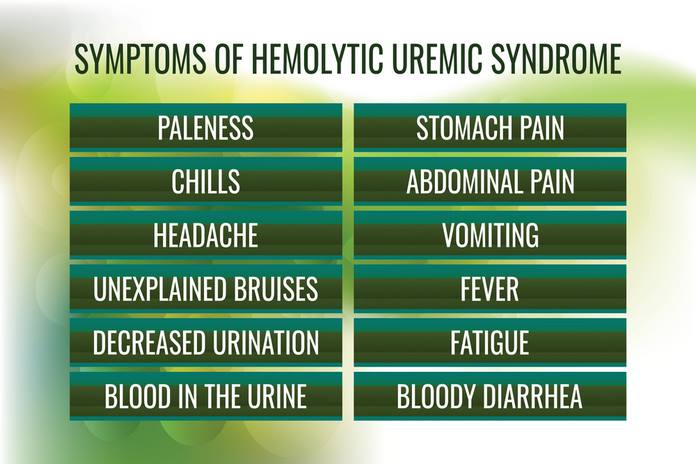Hemolytic Uremic Syndrome Symptoms

Hemolytic uremic syndrome is a life-threatening illness. While it can affect anyone, children under the age of 5 are at the highest risk. Because HUS occurs as a result of an infection, symptoms can vary. The most serious symptoms include massive swelling (also called edema), which is present in about 3 in 4 people with HUS.(4) Other symptoms may include:
Diarrhea
The main symptom of hemolytic uremic syndrome (HUS) is diarrhea. This is often the first sign of HUS, and children may also have other symptoms of an infection or inflammation, such as vomiting and fever. HUS is a potentially life threatening complication of infection with E. coli. Healthy kidneys filter waste and extra fluids out of the blood, but when kidney function is impaired, large molecules such as proteins leak into the urine.
Bloody diarrhea is a common symptom of hemolytic uremic syndrome. It can be accompanied by abdominal pain and other symptoms. The bloody diarrhea associated with hemolytic uremic syndrome is often bloody mucoid stools due to the breakdown of red blood cells. The red blood cell wall leaks into the intestines and makes the stool red like a tomato soup. The blood or blood products are passed in the stools because of failure of the kidneys’ filtering system.
